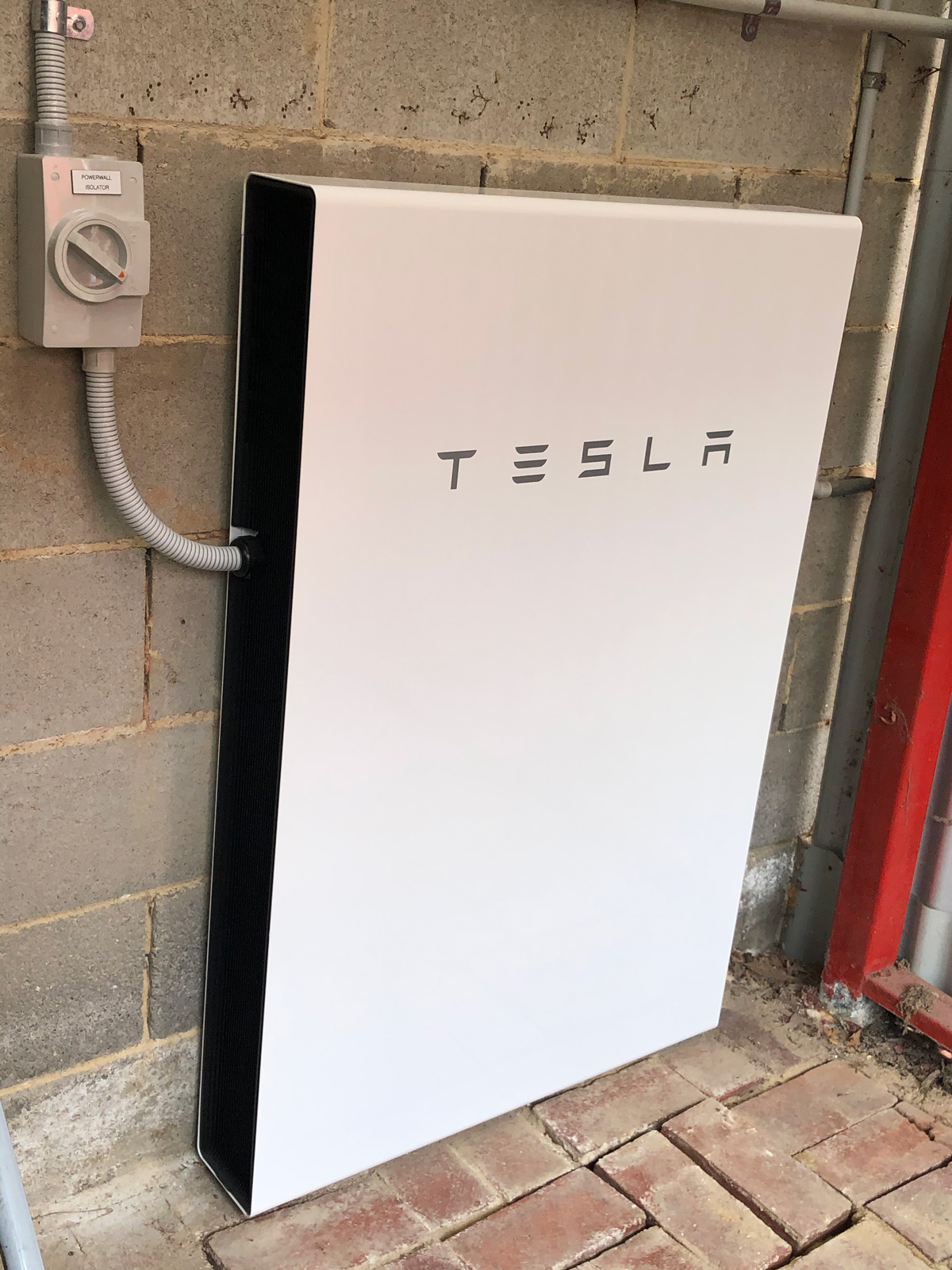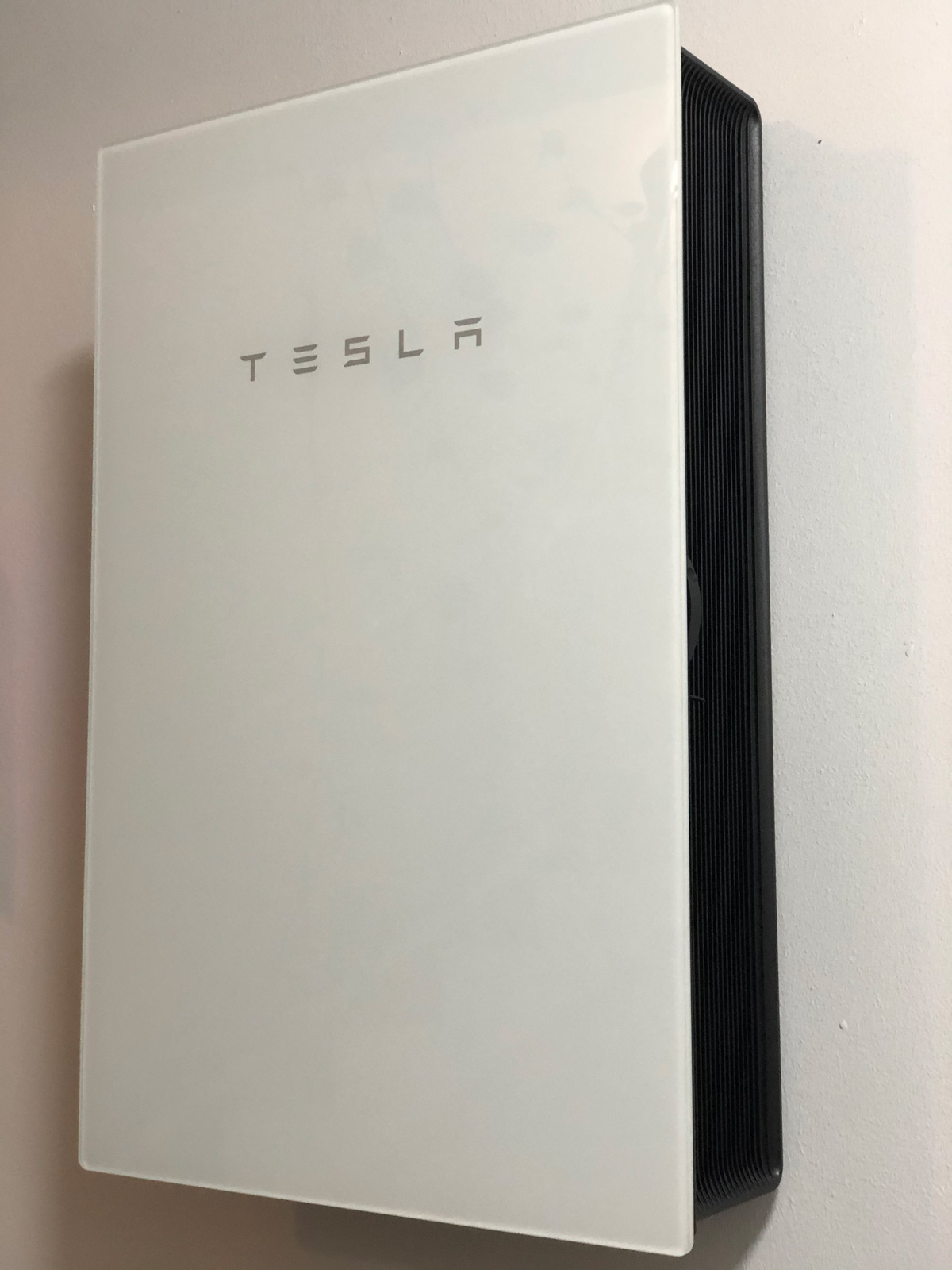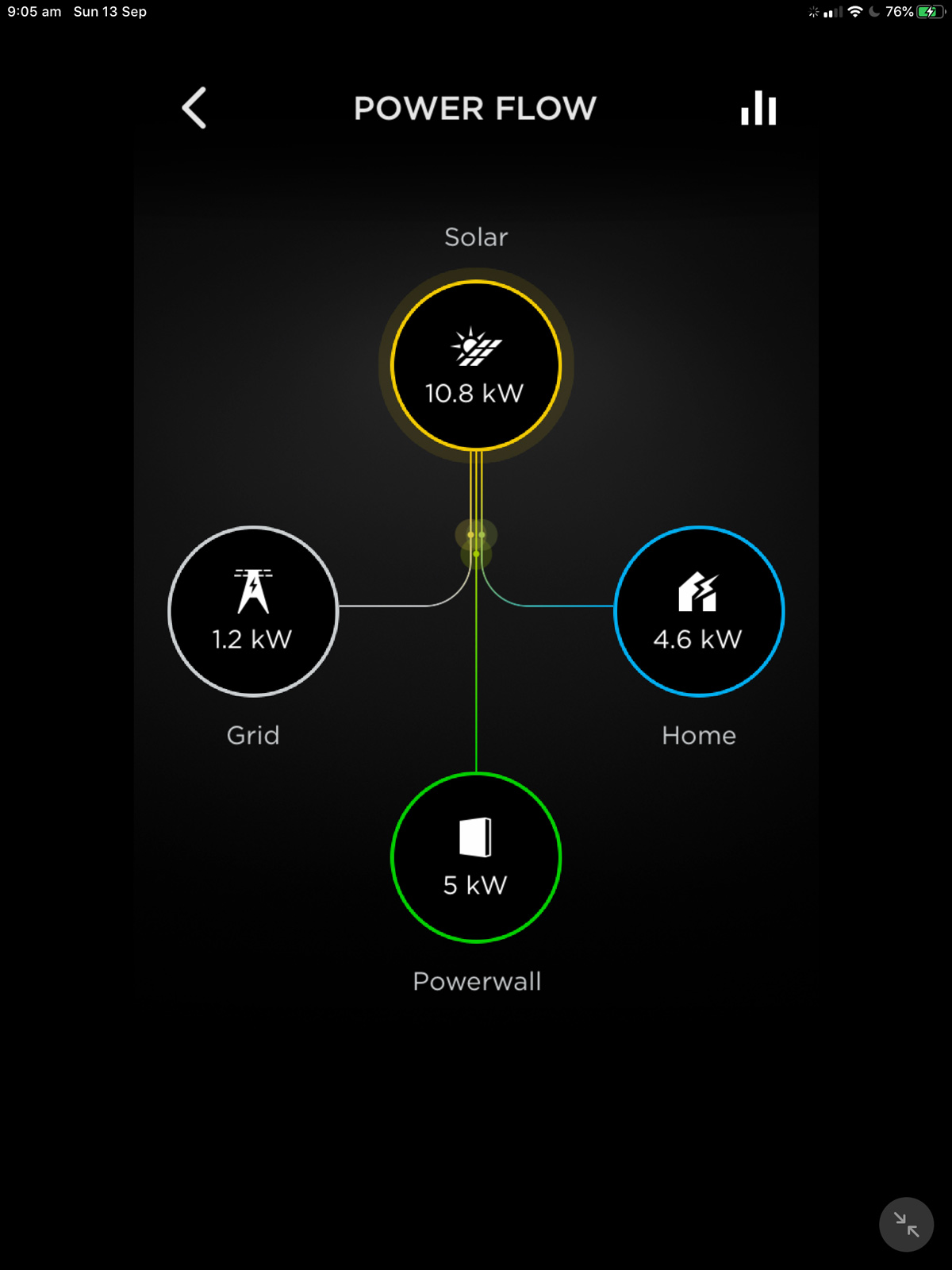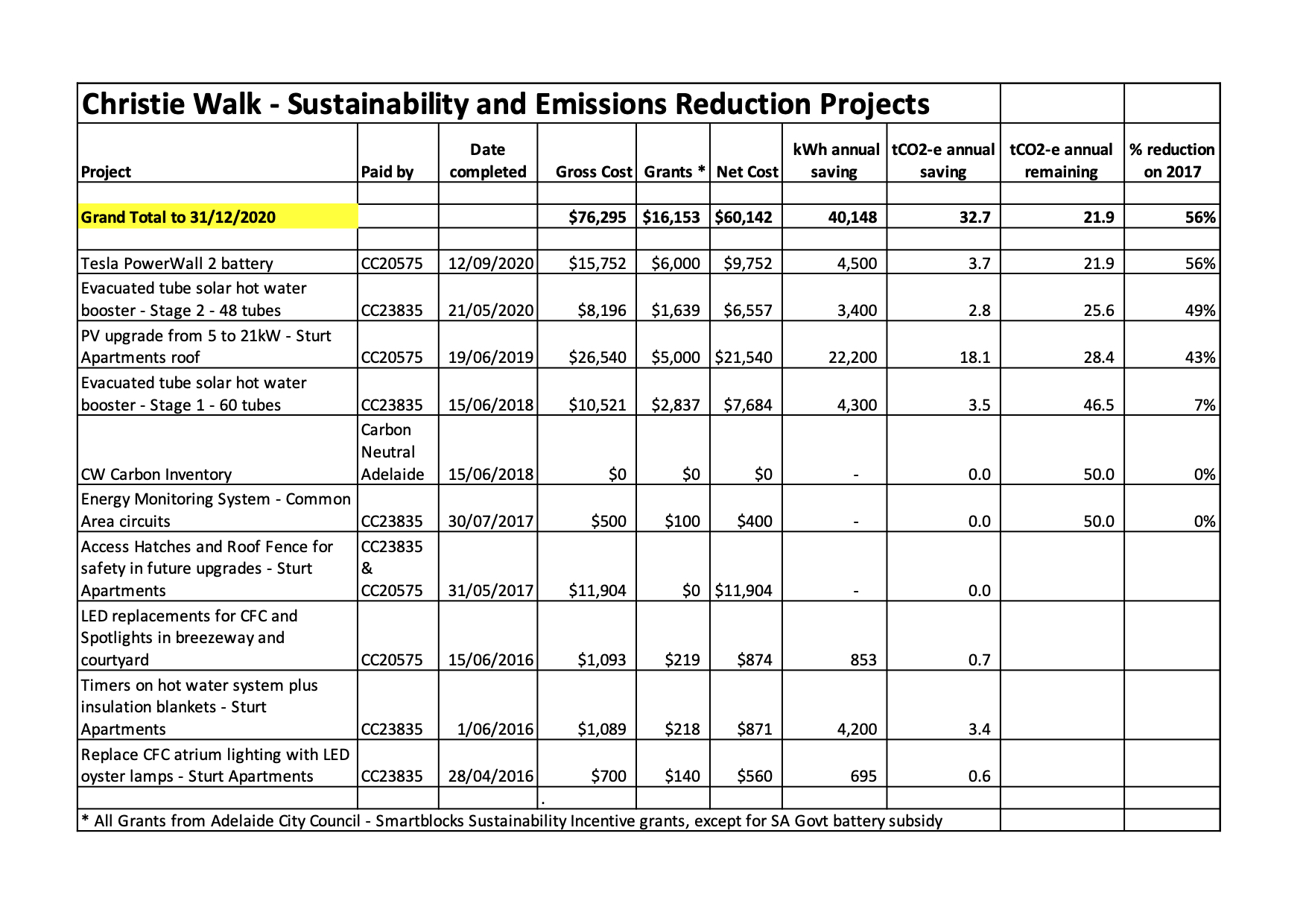2020 – Battery options modelling
In the middle of all that work on evacuated tubes, we learned that change was imminent in the SA Government Home Battery Scheme. To qualify for the maximum $6k subsidy, applications had to be lodged by 15th April.
Our modelling indicated that our 21kW PVs were generating enough power to usefully support up to about 55kWh of battery storage, corresponding to 4 x Tesla PowerWall 2 batteries. In cost-benefit terms, a sweet-spot would be with 2 batteries. In the depths of winter in July we’d still generate enough net power to fully charge the batteries for use overnight.
The estimates went like this (remember this is for a building of 13 apartments, usually housing 21 people):
- With 1 x 13.5kWh battery we’d store enough from our PVs to power us through the early-evening peak usage all year round.
- With 2 batteries we’d also cover some of the morning peak.
- With 3 batteries we’d be fully self-powered for 6 months of the year, and for sunny days through winter.
- With 4 batteries we’d be fully self-powered all year round, and would still be exporting some spare power to the grid every month.
Financial considerations
Payback period was estimated at 12 years for 1 battery and 13 years for 2 batteries. That’s a little longer than the 10-year warranty, but not a show-stopper.
The only problem with the 2 battery solution is that we could not afford it. Our Community Corporation has never borrowed money for projects. Savings generated by previous projects have been stashed away for future projects in our Green Fund.
Technical limitations
There’s also a problem with more than 2 batteries as we’d run up against current South Australian Power Networks (SAPN) rules which limit a Small Embedded Generator (SEG) to a 30kW grid connection. For Large Embedded Generators (LEG) – 30kW up to 200kW – the connection approval process is more onerous, including paying SAPN $4,336 for “enhanced connection services”. Strangely, SAPN requires the kW capacity of battery inverters to be added to the kW of the PV inverter in the calculation, even if the batteries are set to zero export to the grid. So in our case the sum for 3 batteries would be:
- PV Inverter 20kW
- 3 batteries @ 5kW = 15kW
- Total 35kW, which would take us out of the SEG rules into the large extra expense of a LEG connection application.
This SAPN rule makes sense if the installation is to be part of a Virtual Power Plant (VPP), because in that case the VPP can draw emergency power for the grid from batteries that are in the VPP. But in our case, the batteries only provide power for self-consumption, not for the grid, so it makes no sense at all for the 5kW per battery to be counted in the SEG rule. It’s an unfortunate disincentive when SAPN should be doing everything it can to provide incentives for maximising self-consumption of solar power, to reduce the grid stability problems associated with the duck curve.
Subsidy approved and battery ordered
We secured approval for the maximum $6k subsidy and placed our order with DQ Electrical for installation of our first Tesla Powerwall 2.
Installation was completed on 12th September 2020, a few weeks ahead of our 6 months completion window allowed for with the subsidy.

Battery performance
The battery has been performing well:
- On a typical Spring day the PVs generate excess power for the building by 8am or 9am and the battery starts charging and is usually at 100% by noon. The charge rate is limited to Powerwall inverter capacity of 5kW, so most days, there is still excess PV power that goes to the grid, even while the battery is charging.
- By about 6:30pm the PVs are no longer generating enough for the usage in the building, so the battery starts contributing power.
- Typically the battery has enough stored to keep us off-grid till about 10:30pm.
- By then the battery level has dropped to 5%, the amount that we have elected to keep in reserve for backup of essential services in the event of a grid failure.
- Overall, for October, the building was 54% self-powered: 36% self-powered direct from the PVs and another 18% PV power stored in the battery.
- Tesla provides automatic over-the-air software updates for efficiency and security upgrades.

Other systems considered
During the battery design phase we considered many different options including:
- 2 x LG Chem RESU10H with SolarEdge SE5000-AUS inverter
- Alpha-ESS Storion Series T30 (ideal for subsequent expansion, but very heavy initial cost)
- Redflow
Our configuration
- Neurio Meter Kit with 3 x 200amp CTs (Current Transformers) – communicates wirelessly with Tesla Gateway 2, metering the current through each of our 3-phase lines right behind our main retailer NMI (National Meter Identifier) meter.
- Tesla Gateway 2 – provides energy management and monitoring for solar self-consumption, time-based control, and seamlessly switches to backup in the event of grid failure. Only essential circuits are selected for backup, and these are rewired through circuit-breakers in the Gateway instead of in our common area switchboard.
- Tesla PowerWall 2 – 2020 edition
Installed cost
- Gross cost = $15,752
- less SA Government Home Battery Scheme subsidy $6,000
- Nett cost = $9,752
- emissions annual saving = 3.7tCO2-e
Lessons learnt along the way
- The Tesla PowerWall 2 is an inside/outside battery and is liquid-cooled.
- We originally planned an outside installation, but at the last minute decided to install it in a shed instead because:
- The only limitation for outside installation is to avoid direct sunlight. Our planned outside location would receive some morning direct sunlight just as the battery was beginning to charge.
- The outside location was also beneath some residents’ balconies and there was some concern about possible noise annoyance from the inbuilt battery cooling system if it spins up fast on hot days. Post-installation we haven’t experienced any perceptible noise from the battery.
- Tesla specifies 90% round-trip efficiency (i.e. up to 10% total losses getting power into the battery and out again). Measured round-trip efficiency has ranged between 89.5% and 90.6%.
- The Tesla App for mobiles and tablets provides excellent monitoring facilities. It also allows convenient data download such as daily summaries by month for import, export, self-consumption and total usage.

End of 2020 Carbon Emissions Summary
- At end of 2019 = 28.4tCO2-e annually
- Abatement project #1 of 2020 (Evacuated tube solar hot water booster – Stage 2 – 48 tubes) = 2.8tCO2-e reduction.
- Abatement project #2 of 2020 (Tesla PowerWall 2 battery) = 3.7tCO2-e reduction.
- At end of 2020 = 28.4 – 2.8 – 3.7 = 21.9tCO2-e. Great! We’ve reduced our emissions by 56% in the 3 years since our emissions audit. Getting rid of that last 21.9tCO2-e won’t be easy, but let’s press on.

Series conclusion
Emissions abatement work on an existing development is complex and laden with practical constraints. So why don’t our governments – federal, state and local – mandate all new housing, commercial and industrial construction to be NetZero? Otherwise our legacy to future generations is a stock of buildings that are worsening global warming over their decades of lifetime.
A good start would be to build thousands of new social housing units, all NetZero. We’d achieve climate and social equity goals concurrently, at the same time as providing comfortable homes that minimise energy costs for the residents.
It’s time to get serious about NetZero.
As Christie Walk architect Paul Downton said, “the city can save the planet”.
You can continue reading of our adventure with Episode 8 – We need to talk about shower heads.
It’s part of our special series:
Aiming beyond NetZero at Christie Walk – Adventures with an environment-conscious inner-urban community.


Leave a Reply